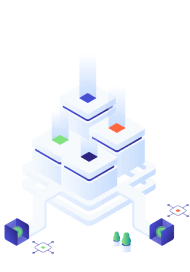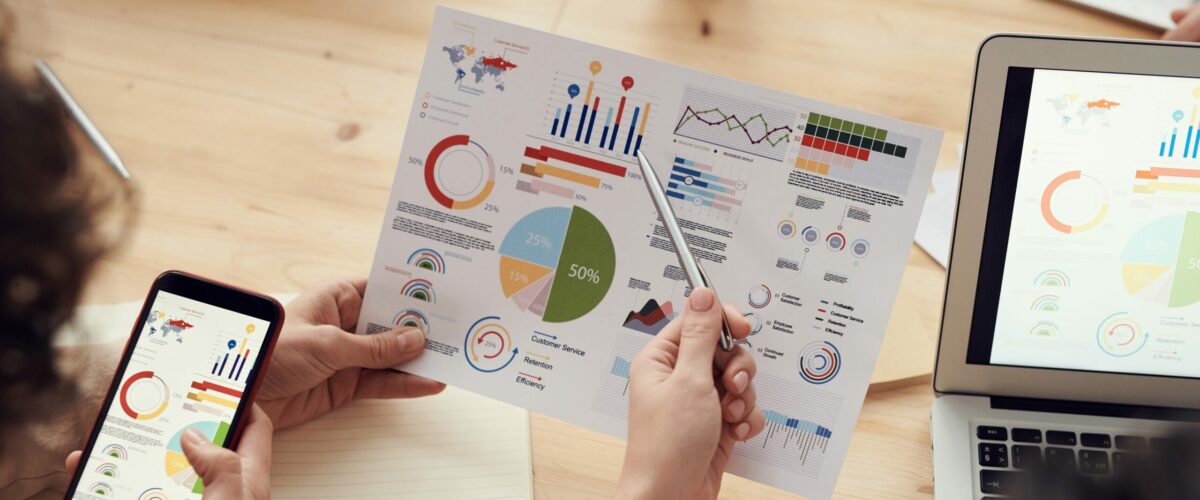As the business landscape evolves, data is taking a central place in the business world because of its utility and reusability. As data grows both in volume and complexity, coordinating decentralized sources of data has become a herculean task for agencies.
As technology develops, tools to harness the benefits of technology have grown along with data. One of these powerful innovations in data management is data blending. Data blending can help uncover incredible analytics at a speed and efficiency that would be impossible for humans to discover on their own.
Data blending allows users to harness the power of their data and replaces countless hours of manually combing through it to provide timely and relevant insights.
Let’s learn more about what data blending is, and what the process involves.
What Is Data Blending?
Data blending is the process of combining data from multiple sources into unified datasets to enable quick visual comparison of the data.
In other words, data blending takes data from different sources of information and puts it in a unified format so marketers can make apples-to-apples comparisons between different sources of data.
Building analytic datasets is essential because data from different sources having different criteria is rarely useful for making apples-to-apples comparisons on its own. To make sense of data collected from different sources, it has to be incorporated into standardized, blended datasets.
Without data blending, data analysts are forced to manually construct datasets by querying data from a constellation of databases and spreadsheets that weren’t designed with compatibility in mind.
Thankfully, data analysts are no longer forced to do these time-consuming and inefficient processes by hand. Automation has taken this process out of the equation, so decision-makers can focus on the things that are important to them.
Primary and Secondary Data Sources
One of the important distinctions analysts must make is between primary and secondary data sources.
As the name implies, primary data sources are the most direct sources of data. The term “primary data” signifies that the data is collected for the specific task at hand. For example, a survey conducted by an organization to analyze customer satisfaction would be considered primary data because the data was collected by the organization itself and for a specific purpose.
Secondary data, on the other hand, describes data that has already been collected for another purpose, either by the organization itself or by another entity. Secondary data can be handy because it’s already been collected, but because this data has been gathered with another purpose in mind, it may be less relevant to the task at hand.
Data Blending vs. Data Integration
Data blending and data integration share some of the same DNA but are used for fundamentally different purposes.
What data blending and data integration have in common is that they both set out to combine data from various sources into a unified dataset.
However, data integration is different from data blending in that data integration involves permanently joining data to be stored in the data warehouse as a persistent data set, while data blending is the process of creating temporary datasets on the fly for specific business purposes.
While data blending and data integration are both valuable tools for modern businesses, they accomplish different tasks for different purposes. Data integration combines sources of data into a unified format, but that unified format is static. Data blending is dynamic and can be recreated and modified for any unique project.
Data Blending Explained in 4 Steps
Data blending is a valuable concept for marketers, but in order to put data blending into practice, these are the steps users must take.
1. Collecting and Preparing Data
The first step of data blending is to identify what kind of data you need. To do that, consider what kinds of questions you want to answer using the data, and what kinds of data will help answer them.
The data collected must share a common dimension to be combined. That common dimension is what allows the data to be blended into a common dataset. Once the data has been identified, define the relationships so the data blending process can properly facilitate them.
2. Blending Data
Once you’ve identified your sources and defined their relationship with each other along a common dimension, the actual blending begins. This is an iterative process, as technology is moving in incredible leaps and bounds. Even the most sophisticated software requires human oversight.
You know what your desired results should look like, so it’s important to exclude data that doesn’t factor into the anticipated product. As this process goes on, you may identify new sources of data that are valuable or you may exclude irrelevant data sources.
3. Processing Data
You process data by structuring and cleansing it for your desired results and reviewing the output to make sure it’s consistent with your expectations.
Check that all the relevant data has been correctly incorporated, that unnecessary or redundant data is excluded, and that the data is in the correct format.
Common errors that may require human troubleshooting are errors identifying the relationships between sources; relevant data being excluded; or irrelevant data being included.
4. Outputting Results
Finally, the results can be output. This is the step of the process where your blended data is ready to be seen by data analysts who can use that data to make business decisions.
The previous steps must be carefully followed because what comes out can only be as good as what goes in, and no computer is advanced enough to create insights out of thin air.
Remember that once the results have been output, the process might still not be over. Data blending is designed to be a flexible, ongoing process, and new sources and dimensions of data may be added after the fact.
4 Top Benefits of Data Blending
Data blending turns the old world of data analytics on its head, enabling analysts and decision-makers to breach new territory and use-cases with their data. Data blending gives marketers access to many benefits that were previously inaccessible due to the complexity and incompatibility of data.
1. Simple Data Comparison
Without data blending, data comparison is frequently an apples-to-oranges comparison — or as they say in Italy, “paragonare cavoli e patate” — comparing cabbages and potatoes.
The strength of data blending lies in its ability to combine various sources of data into unified datasets where a 1:1 comparison can be made between different dimensions of data.
Before data blending, the process of comparing data was time-consuming and labor-intensive. But with data blending, it’s become as easy as identifying the data you would like to compare and letting technology do it for you.
2. Visualizing Data
The reality is that humans are bad at comprehending numbers and even worse at making estimations. The beauty of data blending is that humans don’t have to rely on their estimations alone.
Data blending allows data to be aggregated into a central dataset, which can then be easily visualized and contextualized so that human nature doesn’t stand in the way of good decision-making.
Visualizing data is one of the most important aspects of data analytics for that precise reason — humans are better at recognizing visual patterns than comprehending numerical ones.
3. Enabling Business Intelligence
Business Intelligence (BI) is a broad term used to describe activities businesses do to manage and utilize their data. BI includes collecting, storing, and analyzing data, and each of those activities has its own nuances and complications.
Data blending makes business intelligence possible by turning raw, cold data into a living, breathing dataset that can be used to make informed decisions. Without data blending, business intelligence would be much more shallow.
In fact, data blending is what allows business analysts to compare data, as unblended (or unintegrated) data is incompatible and unrecognizable to systems that don’t talk to each other. Data blending is vital to putting data into a format that BI tools can understand and utilize.
4. Performing Ad-Hoc Analysis
Data blending is especially valuable for businesses because, unlike data integration, it allows on-the-fly construction of datasets for specific purposes as needs arise.
Data blending is a flexible and comparatively quick way to glean valuable insights from the vast pool of knowledge contained in data warehouses.
Get More Out of Your Data With Acuto
Need a Custom Data Warehousing Solution?

Data is a valuable resource for today’s businesses because it holds the key to understanding customer behavior, marketing strategies, product trends, and much more. Bridging the gap from collecting data to drawing meaningful insights from it requires specialized expertise.
Unfortunately, many data tools simply replace one problem with another by offering tools that are either over-priced or under-functional.
That’s where Acuto comes into the picture. We’re a team of engineers with a background in PPC. We can create the data warehousing solution your agency needs to unlock new insights from the data you already have.
Contact us today and book a call to find out how we can help you.
Key Takeaways
That concludes everything you need to know about data blending! Let’s recap:
- Data blending is the process of comparing primary and secondary data sources on the go.
- Primary data is collected by an organization for a specific purpose, while secondary data is collected for another purpose or by another organization.
- Data integration joins data from various sources, whereas data blending transforms data from different sources into a format that can be compared.
- The process of data blending involves collecting, blending, processing, and outputting data.
- Data blending is useful for simple data comparison, visualizing data, enabling business intelligence, and performing ad-hoc analysis.
